
Miramichi Early Run Wrap Up and Other Salmon News
Fishing Friends – I drove home from the Miramichi on July 5th after one of the most topsy-turvy early season fishing trips I have taken. The short of it is that the catching was poor, and the run of fish was, well, it was confusing… We started out with a little burst of fish towards the end of May. That was good, some years we don’t have any. This continued with a little trickle of fish right up through mid-June. There were salmon in the pools up by Salmon and Rocky Brooks right on time. There weren’t a lot, but they were there.
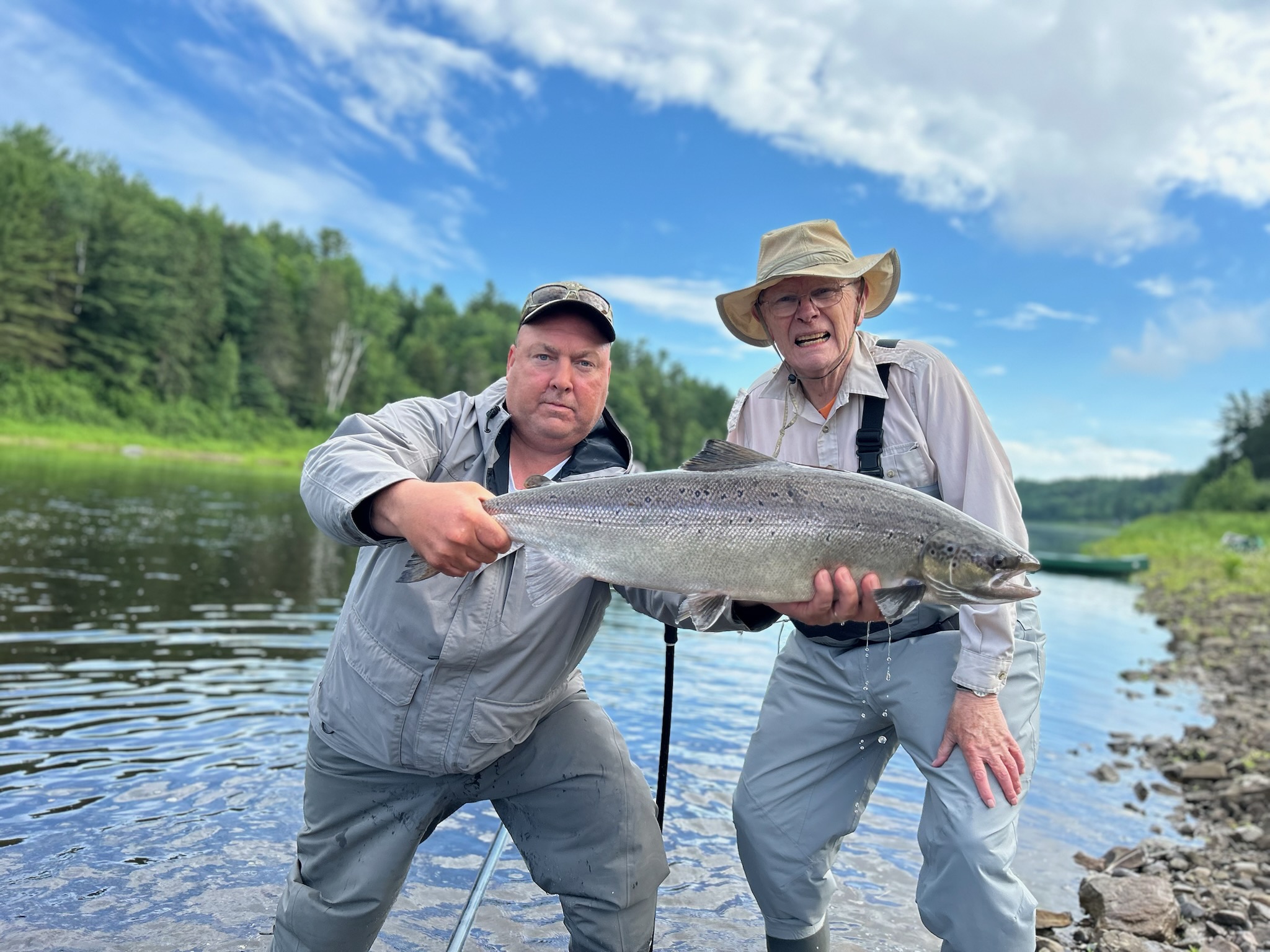
Eddie Colford holds a great, early-run salmon for long-time BBSC member Dr. Arne Youngberg of CT USA.
Places like Black Brook that had anglers on the water early saw fish and caught a few. All the fish were beautiful specimens well worth the effort. Then, as described in my last blog we had an unexpected mini heat wave, and everything ground to a stop.
I was back on the 24th, and things were slow. We recovered from the heat, and a few fish including the first grilse were taken. Again, most of these were at Black Brook or further upriver. In my daily Miramichi Salmon Report I noted that on June 29 things seemed to really take a positive change. After catching a grilse in the morning on a #4 John Olin, I had three good salmon roll, actually lunge aggressively at my fly in the evening. There were repeat rises on changes of flies, but never once did a salmon touch the fly. I even went over them with bombers – which they refused to look at.
The next morning Andy Dumaine caught a nice salmon of about 11 or 12 pounds, and we saw a couple more, though they weren’t stacked up as they had been the night before. Bill Utley and I were back down at Doctor’s Island that same evening and about two hours before dark a whole school of salmon moved into the pool. We had fish jumping from one end of the pool to the other. We cast constantly for an hour and a half, often covering rising fish, and did not have a roll or a pull. It was unbelievably frustrating as you can imagine. Another friend was 4 miles upriver at Campbells. He saw a number of fish run through the pool and had one roll twice for his fly, touching it on both occasions but not getting hooked. I compared notes with Eddie Colford of the Black Brook Salmon Club and they were having similar experiences – rolling fish but not taking well. This behavior is not unusual with stale, pooled up fish in the fall, but on fish fresh as daisies it is much more unusual. As further confirmation of the run, a friend who knows the owners of The Ledges in Doaktown said that they also had been seeing good numbers of fish in their pools for the last three days.
I also spoke with Wayne O’Donnell, manager of the Rocky Brook camps about 20 miles upriver from Boiestown. Wayne said that there seemed to be less fish in his pools
than he was used to seeing, and that their catch was down considerably from normal levels. When I spoke to Wayne it could be that most of those late June fish hadn’t reached Rocky Brook yet.
On July 1 the maximum water temp for the day was only 19.5C/67F, but on the third, after two days of clear, blue, sun-filled skies the river hit 23.5C/74F and it was warmer the next day. DFO closed angling on all of the cold-water pools. It takes three consecutive days where the water gets at least as low as 20C/68F to reopen. The weather for the rest of this week is very hot again, and I don’t see the pools reopening in the near future.
The DFO official trap numbers through June 30 filled in a few more details. The SWM at Millerton had 72 salmon through that date, and that total was only bested once – 2022 had 96 – in the records on the website, and the NWM had 19, a slightly below average total, but more than 2023’s total of 13. Grilse, though, were a totally different story. The SWM had 13 grilse and the NWM had 9, both numbers vying for the lowest ever recorded on that date. I checked with Mark Hambrook – past president of the MSA – and John Bagnall of the New Brunswick Salmon Council, and they both blamed the exceedingly poor grilse numbers on smolt predation by striped bass. I never mention these trap numbers without cautioning that they only represent a very small percentage of the actual fish in the run. Viewed over many years, though, they do illustrate the trends in the salmon population. Beyond that the timing of the run changes quite a bit from year to year – we could see more fish later in July and in the fall – so it will be October before we have a more complete picture of the run.
The Canadian Department of Fisheries and Oceans, whose Moncton office’s policies on striped bass have been so ruinous to Miramichi Atlantic salmon fishing, has released for comment the latest draft of its proposed Atlantic Salmon Strategy. You can access it at this link https://www.dfo-mpo.gc.ca/about-notre-sujet/engagement/2022/wild-salmon-saumon-sauvage-eng.html. Part of the information at the link is a questionnaire that you can fill out to comment on the plan. I hope that you will do it. One prominent fishery biologist that I know says it is “paralysis by analysis.” This document has been years in the making, yet I fail to see anything of actual value to salmon conservation, nor does it include anything that resembles recovery strategy – just more talk and more commitment to talk. I suppose that is better than having it outright declare government opposition to some action that might actually be helpful as DFO did with the CAST program. What a great opportunity the river missed there.
In the beginning of the Draft Strategy DFO states that the salmon is an iconic species, that its importance to First Nations goes far beyond money, and that in their survey work DFO determined that beyond any other fish that swims in Canada the public was willing to spend a lot of money to restore the runs. It is really eye opening as to the impenetrable depths of DFO bureaucracy that they could say those things and yet the draft strategy doesn’t say anything about potential remedies to the existing situation. Statements about things like commitments to predator prey and eco system balance, or funding for stocking programs are completely missing, even though everyone knows that addressing those issues, are the only way to restore the Miramichi River system which supports over 90% of Atlantic salmon fishing activity in New Brunswick. Someone recently said that as one of their comments on the questionnaire DFO should offer to transfer their authority to manage Atlantic salmon – I’d say all anadromous fish – within the river system to the Province. This is what was done in Quebec, a larger and more powerful Province. It is the right answer for all the Provinces. Doubtless the Provinces could do a much better job at a substantially lower cost than DFO.
If you want to see my comments on the Draft here is a link to the comments that I sent to them.
Back in May we announced a contest for the First Bright Salmon of the Season. That fish was caught by Doctor Jake Swan from his camp in Blissfield on May 31. I’m pleased to say that the MSA is going to take over this contest, and in fact they are going to add to it an award for The Last Salmon of the Season. Artist Luther Hall of CT USA has donated the artwork for the first bright salmon and Tehillah Porter of the MSA is currently designing Jake’s award certificate with the art. John Rice of NY USA is donating the autumn fish and is currently working on the art. I thought you might all enjoy seeing Luther’s lovely rendition of an early bright salmon.
Jesse Robbins was originally a Maine man. He grew up near Searsmont, Maine with family roots that go back to the American Revolution. Jesse came naturally by his interest in fly fishing with his father Jon being an avid Maine, wilderness trout fisherman. Jesse had 10-year career with Far Bank – owner of Sage, Redington, Rio and Fly Water Travel. During that time Jesse was instrumental in building a relationship between Far Bank and the MSA US that has been very helpful in our fundraising activities.
Jesse came back east for a while, and I introduced him to the Miramichi which he has also fallen in love with. While Jesse was in camp at Campbell’s we were treated to an exhibition of some of the best Spey casting that any of us are likely to see.
Jesse’s heart is in conservation and writing. He has recently accepted a position with an Oregon organization called Water Watch. Here is a link to their announcement of Jesse’s hiring. Also, Jesse, writes a personal newsletter that you can subscribe too. Here is a link to the latest issue. At the end of the newsletter is a place to sign up for future releases at n/c.
I’m constantly surprised by the incredible depth of love and support that anglers from all over hold for the Miramichi. As a young man in 1979 Ed Ancas from Tunkhannock, PA US, and his buddy took a canoe to New Brunswick for refitting, and Ed ended up
fishing the Miramichi. Ed has now fished the Miramichi very regularly for 45 years, and in recent times struck up a relationship with local guide Ricky Harris. Together they fish all over the Miramichi system as well as some of the other New Brunswick salmon rivers like the Nepisiguit. Last December, as part of an MSA fundraiser, I donated a week vacation trip to our home in Friendship, Maine and Ed bought it.
While I was on the Miramichi last month Ed and Ricky Harris came over for lunch. Ed gave me his MSA membership card and pin from 1979. The card is signed by Charlie Wade!!! Talk about a little bit of living history.
The Miramichi has given incredible enjoyment to generations of anglers like Ed, and we’ve given back to the Province many millions of dollars in revenue and investment. I hope that DFO understands the value of that mutually beneficial relationship.
I’m off Saturday for what has become my annual trip to Paul Roger’s Newfound Outfitters Lodge on the Serpentine River in Newfoundland. We’ll hope to escape the heat over there. It’s a long ride and overnight ferry trip to get there, but I’m very much to looking forward to it all, especially with my wheelman Dawson Hovey, retired RCMP to take over the driving from Fredericton on. I’ll send in a report when I get back, plus will try to send along whatever news I come across on the Miramichi while I’m in camp in Newfoundland.
Thanks for reading. Brad Burns



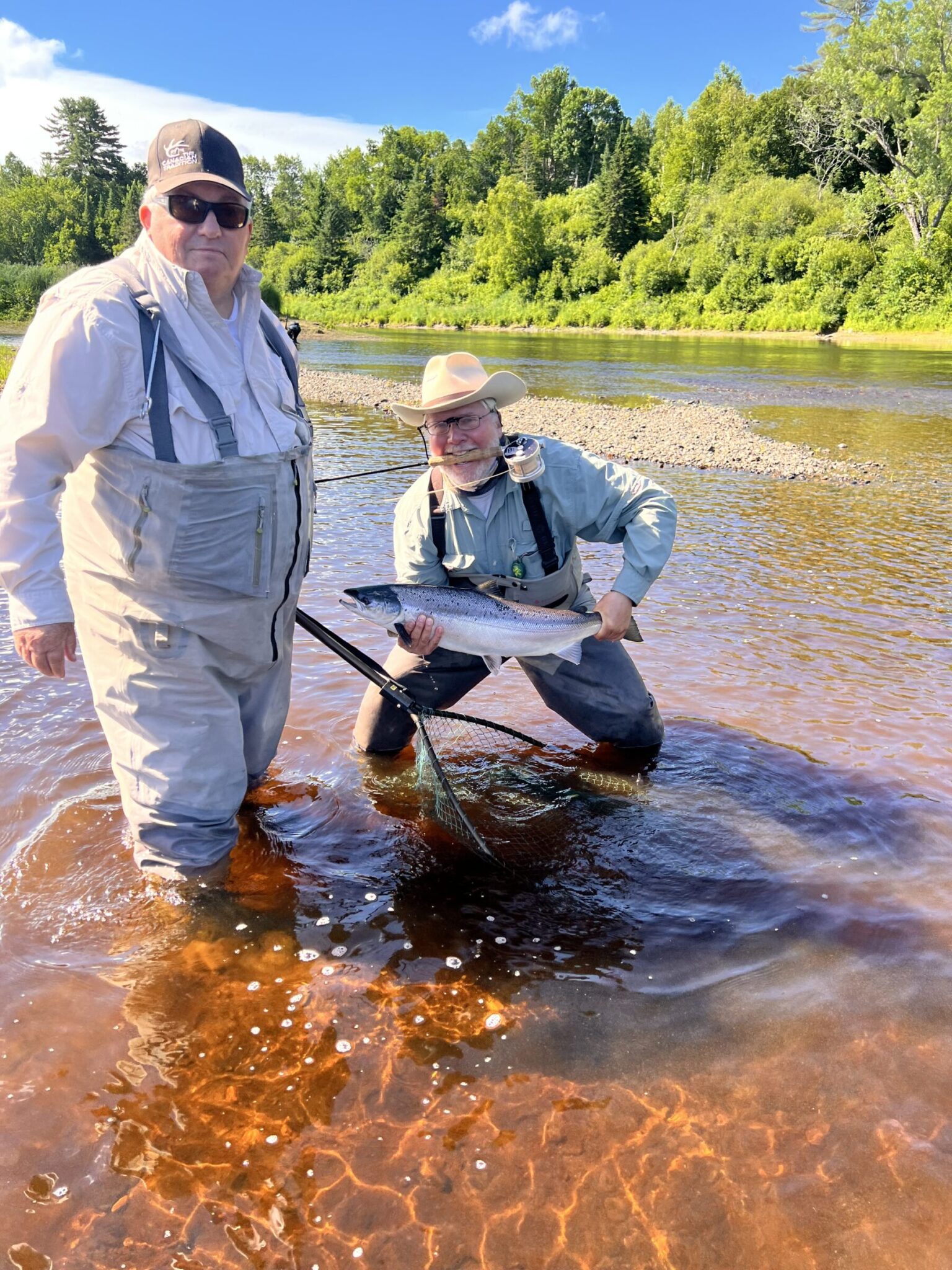
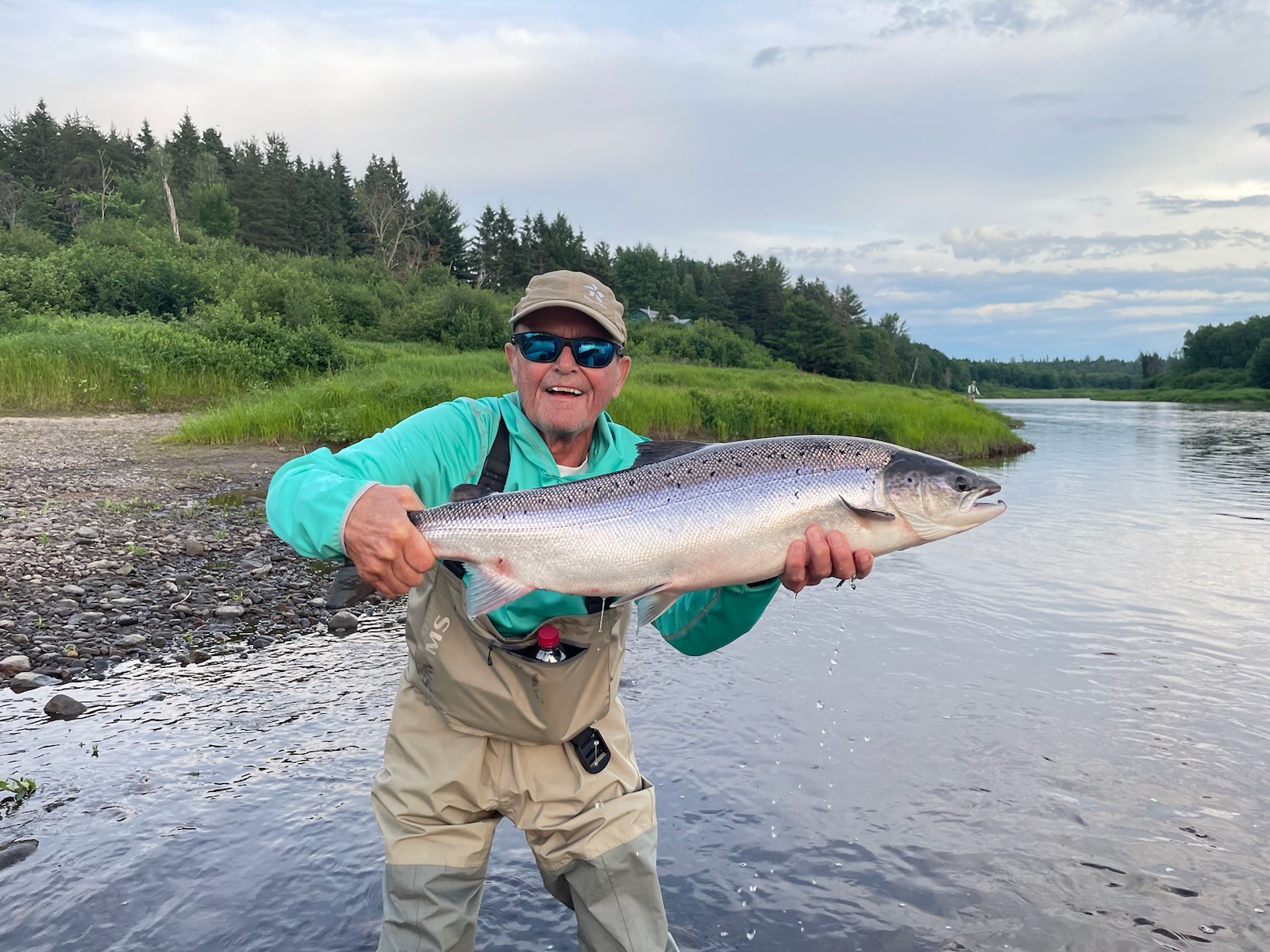
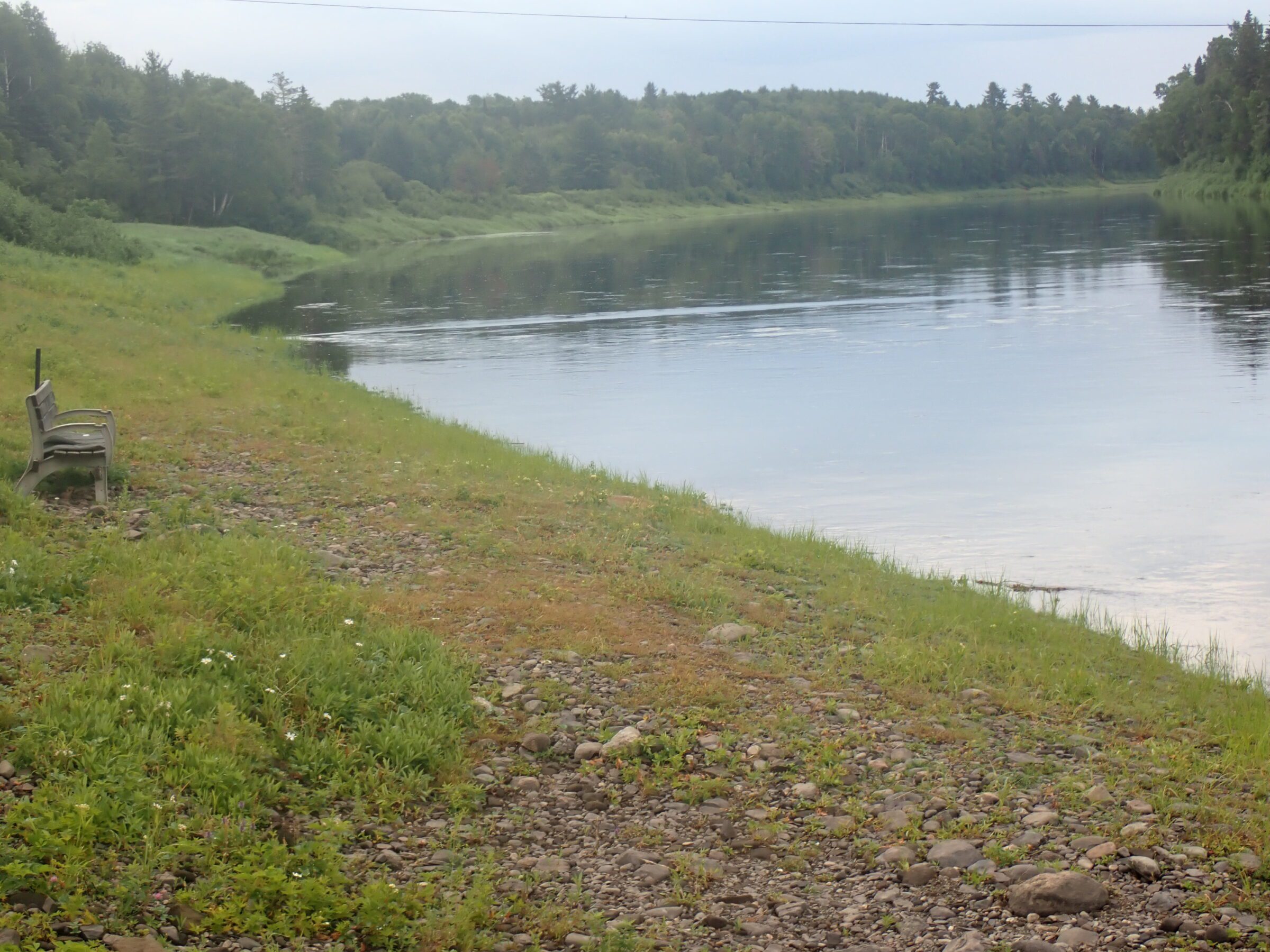


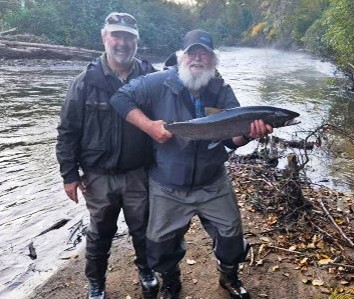
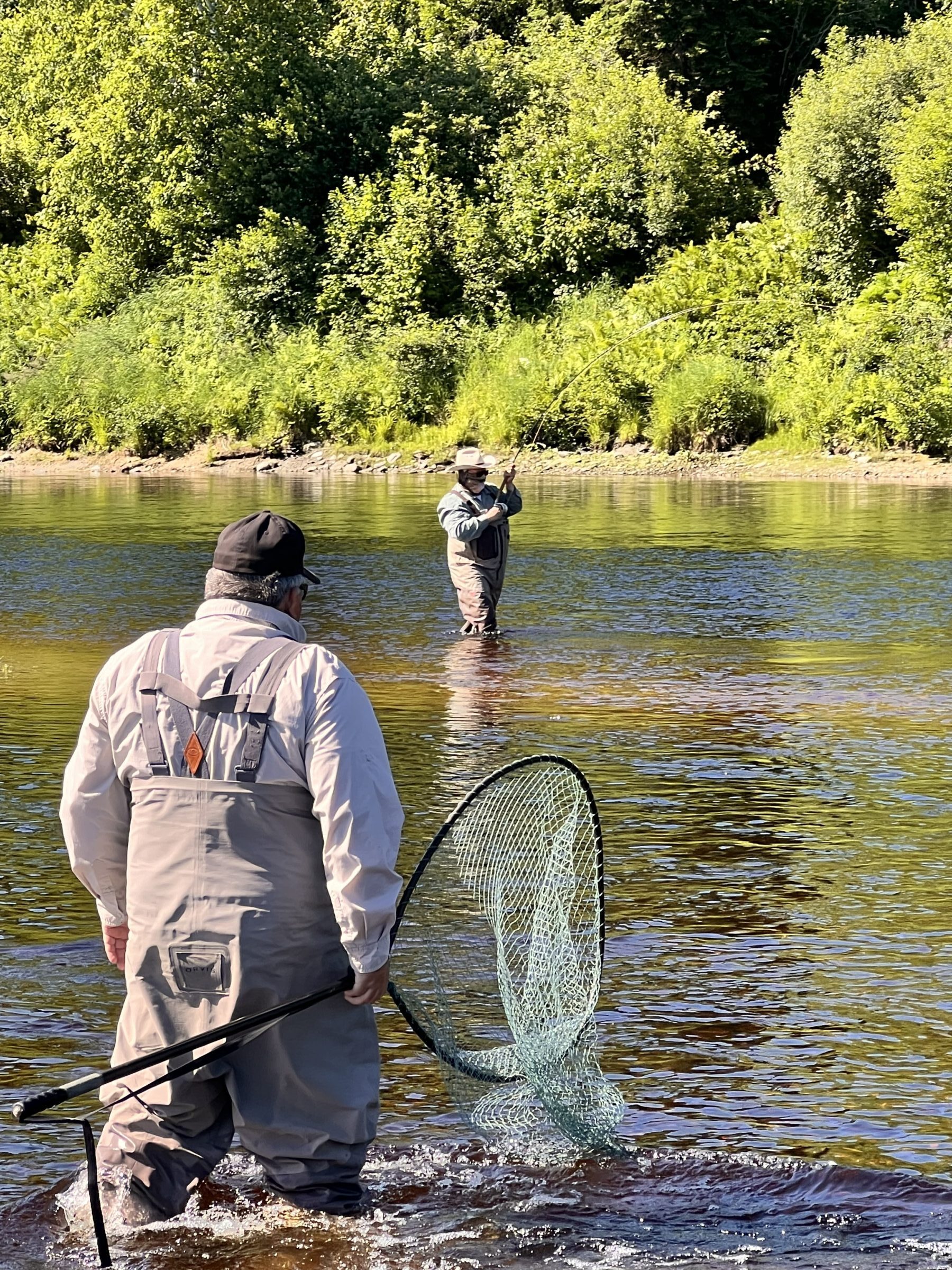
Brad, another great report. I greatly appreciate the updates along with the wonderful photos. Best of luck in Newfoundland.
Hey Brad ,
Just a short comment for thought…
Maybe they should open a season on the half million stripers and feed the numerous, not so fortunate New Brunswickers that are having a hard time feeding their children. Run that by the politicians.
Thanks for your comments Mark. The ridiculous population of striped bass is definitely the problem. I’m sure you know that there is already an open season and fairly generous bag limit of 3 fish. The problem is they have to fit into an absurdly tight little slot size. The clear reality is that DFO likes this huge bass population and apparently is willing to accept the destruction of the river’s Atlantic salmon population. We can’t let that happen and are working every possible angle to try and change their position. The bass need to come down to 100K spawners and a massive stocking project must be undertaken, and we must get started on all this yesterday.
I was thinking more towards a 3 to 5 year commercial fishery in Miramichi Bay. I would think it would thin them out quicker , plus feed the less fortunate in a more efficient manner.
Yes, definitely. So far DFO has been intractable on the idea, but it is the right answer. Licensing the gasperaux trap nets would be by far the easiest way to do it, and DFO could easily keep tabs on their catch.
Common sense goes a long way Brad. Apparently DFO and our fishery politicians lack that capability. Keep up the good work . It’s not going unnoticed.
Brad:
Thank you for what you do. DFO spends its time, it seems, avoiding the solutions to problems everyone but them see.
Keep up the good work.
Pat Wall
Hi Brad,
Thanks for the post and especially your take on DFO’s draft document. I just saw through ASF’s social media this announcement from DFO:
https://www.canada.ca/en/fisheries-oceans/news/2024/07/controlling-striped-bass-stock-creating-economic-opportunities-and-advancing-reconciliation.html
I’m curious your take on that?
Jesse
Missed this Jesse. I’m in Nwfld and will reply to your question when I get back. The quota increase can’t do anything but help. Brad
Just got back from my trip to Friendship Maine. What a beautiful house and property. I’ve never vacationed in Maine before so exploring the coast with it light houses and quaint fishing villages was quite a treat for all of us. Thanks Brad for the chance to enjoy this beautiful place for a while.